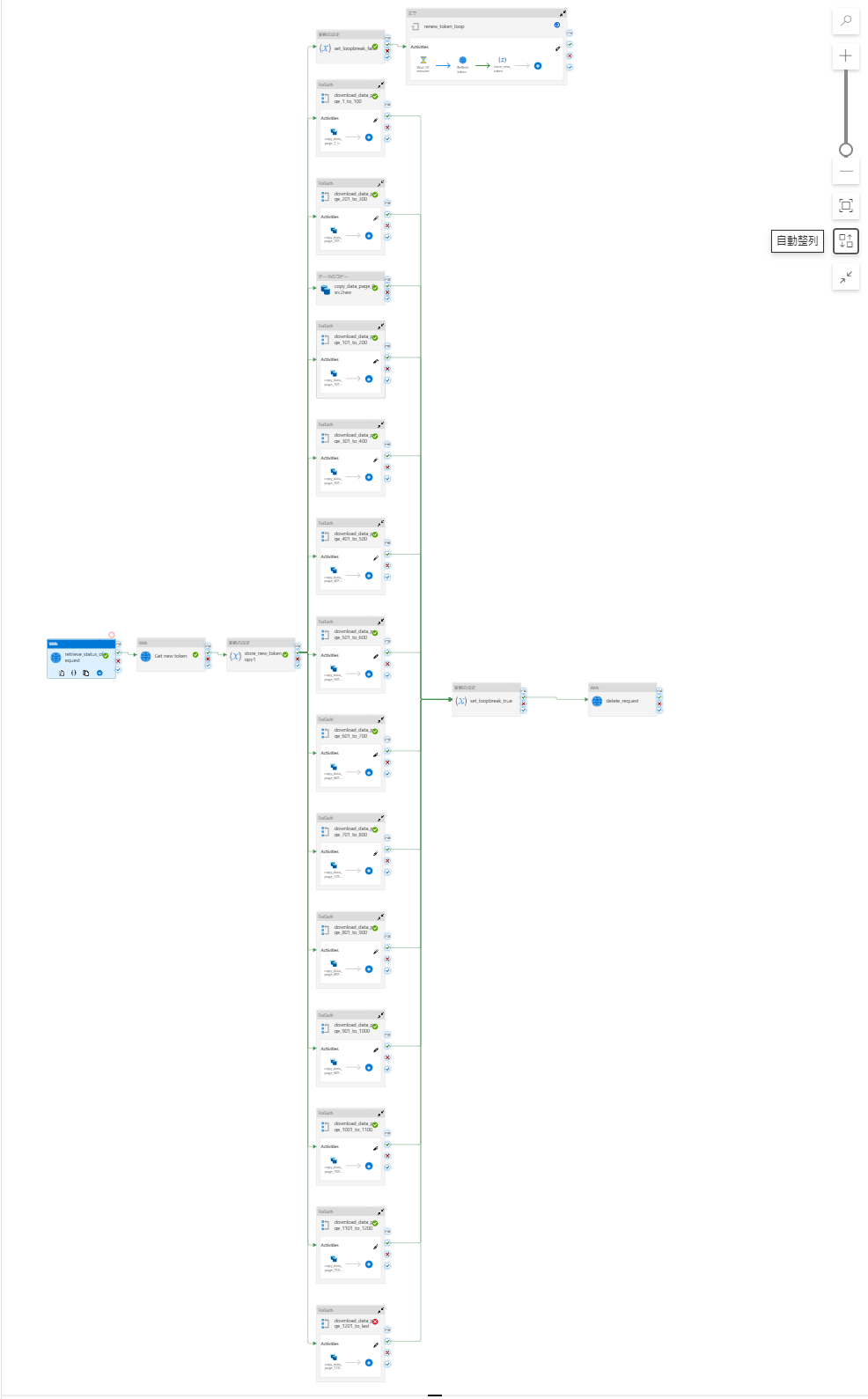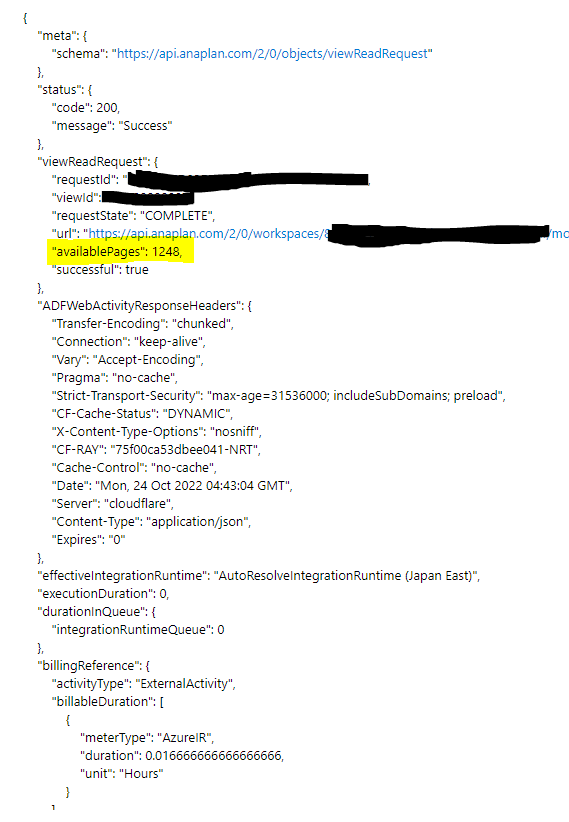Hello @Kakehi Shunya (筧 隼弥) and welcome to Microsoft Q&A.
While your existing structure would do things in parallel, there are more compact and flexible ways to accomplish this.
I have in mind, a ForEach loop, containing a copy activity. Since we know how many pages total, and how many pages per page-batch, we can calculate how many page-batches on the fly.
The ForEach loop requires an array/list of things to iterate over. In this case we want it to be the start/end for each group of pages (page-batch). I am assuming you know how to setup the Copy Activity REST pagination to do a range. If we want pages 51-100 to be a single page-batch and handled by a single copy, the pagination rule for that would be start=51, end =100, increment = 1.
You have already done a calculation on how many page-batches (24.8) depending upon how your API works, we will need to either round up, or handle the remainde .8 seperately from the rest.
We can use the range function to make a sequence of numbers representing our page-batches. This is what we will iterate over.
@range(0,24)
-> [0,1,2,3,4,5,6...22,23,24]
Inside the ForEach loop, we use the expression @item() to get the value of the current iteration. We can then use it to calculate the page start and end.
Start: @add( 1 , mul( item() , 50) )
End: @mul( 50 , add(1 , item() ) )
item | start | end
0 | 1 | 50
1 | 51 | 100
2 | 101 | 150
3 | 151 | 200
In this way we determine the pagination btis.
You will also want to parameterize the sink dataset to make use of item() so each page-batch has a different file name. If you do not, you risk each page-batch overwriting each other.
Now, since you mentioned you want all this parallel, you will want to make sure the ForEach "Sequential" is turned off. Also, crank up the "Batch count" to 20-something. Batch count determines how many workers are making the ForEach parallel.
Try not to use Set Variable activity inside ForEach. All the parallel instances will fight over a single variable "slot".
Hold up, in your picture are those multiple forEach loops? Somehow I thought they were just copy activities. Now I am second guessing my understanding...
Hope this will help. Please let us know if any further queries.
------------------------------
- Please don't forget to click on
 or upvote
or upvote  button whenever the information provided helps you. Original posters help the community find answers faster by identifying the correct answer. Here is how
button whenever the information provided helps you. Original posters help the community find answers faster by identifying the correct answer. Here is how - Want a reminder to come back and check responses? Here is how to subscribe to a notification
- If you are interested in joining the VM program and help shape the future of Q&A: Here is how you can be part of Q&A Volunteer Moderators




